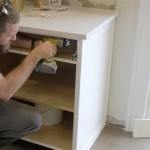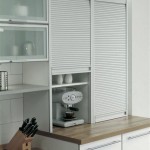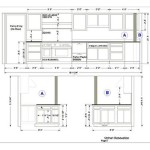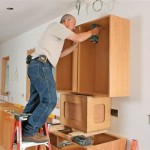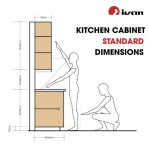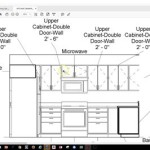How to Fix Kitchen Cupboard Walls: A Comprehensive Guide
Kitchen cupboard walls are often overlooked, but they play a crucial role in the overall functionality and aesthetics of your kitchen. Over time, these walls can become damaged, dirty, or outdated, affecting the entire look of your space. If you're facing issues with your kitchen cupboard walls, don't worry! With the right approach, you can fix them and restore your kitchen's beauty.
1. Identifying Common Issues
Before attempting repairs, it's essential to identify the specific issues affecting your cupboard walls. Some common problems include:
- Cracks: Caused by structural issues, temperature changes, or impact.
- Holes: Can result from drilling, accidents, or improper installation.
- Stains: Caused by spills, grease, or moisture accumulation.
- Peeling or bubbling paint: Indicates moisture or ventilation problems.
- Uneven surfaces: Can be caused by warping, loose panels, or settlement.
2. Preparing for Repairs
Once you've identified the issues, you can start preparing for repairs. Here are some essential steps:
- Clear the area: Remove all items from the cupboards and drawers nearby the affected wall.
- Protect surfaces: Cover countertops, appliances, and floors with drop cloths or plastic sheets.
- Gather necessary tools and materials: This may include spackling paste, wood filler, sandpaper, paint, and tools like putty knives, sanders, and paint brushes.
3. Repairing Cracks and Holes
For cracks, apply spackling paste or wood filler using a putty knife. Smooth out the surface and allow it to dry completely. Sand the area to create a level surface. For holes, use wood filler or epoxy putty to fill the gap. Shape it flush with the surrounding wall and sand it once dry.
4. Removing Stains and Discoloration
Use a damp sponge or cloth to clean the walls with mild detergent. For stubborn stains, try a specific cleaner designed for removing kitchen grime. If the paint is peeling or bubbling, scrape it off using a putty knife and repaint the area.
5. Leveling Uneven Surfaces
In some cases, cupboard walls can become uneven due to warping or loose panels. Inspect the walls for any loose screws or nails. Tighten them securely. If warped panels are causing the issue, consider replacing them with new ones.
6. Finishing Touches
Once the repairs are complete, it's time to add the finishing touches. Sand any rough edges or uneven surfaces. Clean the walls again to remove any dust or debris. If necessary, apply a fresh coat of paint or touch up the existing one to match the rest of your kitchen. Allow the paint to dry completely before putting everything back in place.
7. Maintaining Your Cupboard Walls
To keep your kitchen cupboard walls in good condition, practice regular maintenance. Clean them periodically with a damp sponge or cloth. Fix any small cracks or holes promptly to prevent them from becoming larger problems. Avoid overloading the cupboards, as this can put unnecessary strain on the walls. With proper care, your kitchen cupboard walls will remain sturdy and aesthetically pleasing for years to come.

Wall Unit Fitting Adjustments Diy Kitchens Advice

How To Install Kitchen Cabinets Diy Family Handyman

How To Install Kitchen Cabinets The Wall And Floor With Ease

Wall Unit Fitting Adjustments Diy Kitchens Advice

How To Install Kitchen Cabinets The Wall And Floor With Ease

How To Install Cabinet Filler Strips

Repair Cabinet Falling From The Wall

This Is How You Should Fix Heavy Cabinets To Plasterboard Wall

How To Enclose The Space Above Kitchen Cabinets Angela Marie Made

How To Build Wall Cabinets Houseful Of Handmade
Related Posts

